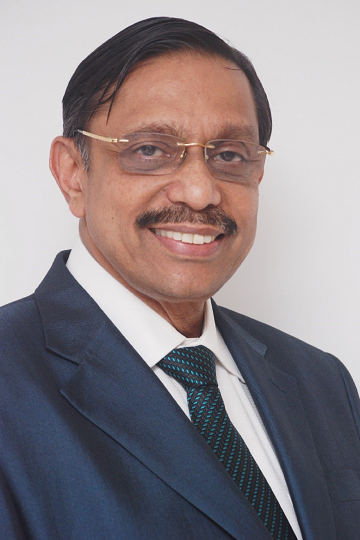09 January 2023
Key-Note
‘Phar-more’ Self-Sustaining

S V Veeramani, Vice-Chairman, Pharmexcil, provides strategic solutions for the potential roadblocks to India’s dream of becoming the ‘Pharmacy of the World’ in a free-wheeling discussion with Yogesh Mudras, Managing Director, Informa Markets in India
YM : While there is a potential to take India beyond being the ambitious ‘Pharmacy of the World’, the reality also is that companies are cutting down on R&D expenses due to thinning margins. How do we create a balance here?
S V Veeramani: It is true that Indian pharmaceutical companies work on lesser margins compared to their global counterparts due to their greater reliance on generics. The top 10 Indian pharma companies spent 7.2% of their revenue in 2021, whereas the R&D investments by companies worldwide are in the range of 15 to 25% since their margins are allowing the same. Indian Pharma companies have acknowledged the importance of R&D expenditure, and thus there is more emphasis on developing value-added generics, biosimilars and NDDS. Focusing on R&D will not only empower Indian pharma companies to be future-ready but also expand their markets and margins exponentially. Undoubtedly, New Drug Discovery requires higher capital and a longer gestation period; hence Indian Pharma companies are strategically looking at doing collaborative research with international partners to share their expenses as well as outcomes.
The government of India may also consider providing more concessions on R&D expenditure where they can bring back 200% weighted deductions in Income Tax as in the past. Further, more concessions may be provided for those companies investing more than 10% of their revenues in R&D by way of special concessions in corporate tax. Thus, the efforts from the companies backed by the support from the Indian Government can create a better balance.
YM: Experts believe the most important aspect for pharma now is to increase the resilience and agility of the supply chains, with technology to guide it along. Do you agree?
S V Veeramani: The agility of supply chain is the most crucial aspect for any Pharma company for the timely delivery of medicines to the patients and avoid any kind of shortages. The pharma supply chain comprises some intermediate agenciesas well and there is definitely a need for speeding up at every level. During Covid times, we also encountered problems pertaining to shortage in shipping containers since most of the containers were withheld in China. The reduction in the number of containers led to the delay in shipments and the price of Sea Freight also increased abnormally. There was a surge in the need of pharmaceuticals during Covid and delays in the supply chain affected the movement of goods drastically
Covid has certainly triggered the need for digitalization due to inadequate manpower attending to work. Pharmaceutical companies are ramping up their digitalization game not only in manufacturing, but also in marketing and sales. Post-Covid, the industry has become even more aware of the need for digitalization in adopting Artificial Intelligence (AI) and Internet of Things (IOT) in pharmaceuticals.
Regulatory agencies are exploring modern technology and tools to digitize, like electronic batch manufacturing records (EBR) ensuring that proper protocols have been followed in terms of accurate assessment and tracking of products. Pharmaceutical companies are increasingly innovating in Machine Learning, for example: adaptation of LIMS (Laboratory Information Management System) can not only speed up the process in improving analysis but also avoid data integrity issues.
I visualize the future of pharma industry where more companies are embracing disruptive technologies to improve reliance and agility that will reshape the entire healthcare and pharma eco-system.
YM: The Drugs, Medical Devices and Cosmetics Bill 2022 have been the subject of much discussion as it has moved with the times to include e-pharmacies, medical devices, and clinical trials of drugs and medical devices. What is your assessment?
S V Veeramani: Keeping the upcoming trends in Drugs & Medical Devices, the current Drugs & Cosmetics Act 1940 and Rules 1945 has undergone several amendments. There’s still slight ambiguity in the definition of New Drugs apart from Spurious and Substandard Drugs. I feel that there will be more advantages than drawbacks by the introduction of the new bill. With clear definitions and directions, we hope the upcoming bill will be up to date so that it can be followed smoothly.
YM: Does India’s dependence on China for Active Pharmaceutical Ingredients (API) continue to sustain? What are the ways we can reduce this dependency at the earliest?
S V Veeramani: The dependency on China for API can only be reduced by increasing our domestic API production. The Government of India has introduced Production Linked Incentive (PLI) Schemes in order to stimulate the API industry. But they can make it more comprehensive so that maximum companies can avail and benefit from the PLI Schemes. Also, the inclusion of drugs can be increased so that we are able to manufacture more API in-house than now.
YM: When it comes to the pharma market, whataccording to you are some of the Imperatives/must-haves for the future globally? Are they different for India?
S V Veeramani: Globally, companies are focusing on reducing the cost of medicines in healthcare. There will be more efforts to produce affordable medicines of quality at a lower price. Although Indian companies are meeting this challenge, there is more to be done.
YM: Has it become even more important for stakeholders and leaders to congregate under a common platform post-Covid?
S V Veeramani: Be it pre-covid (or) post-covid, there has always been a need for stakeholders and leaders to congregate under one platform to face challenges. The pharmaceutical industry faces challenges by way of new technology developments, regulatory changes, talent pool and cost escalations. There is a need for everyone to come together to win over the challenges and work for better health care.